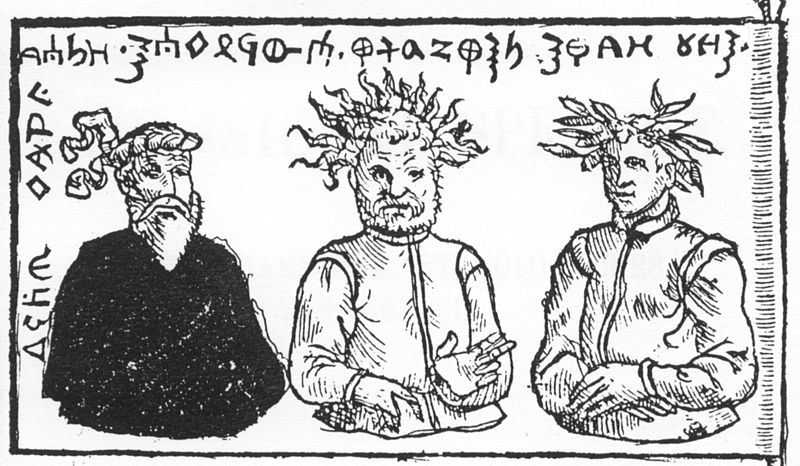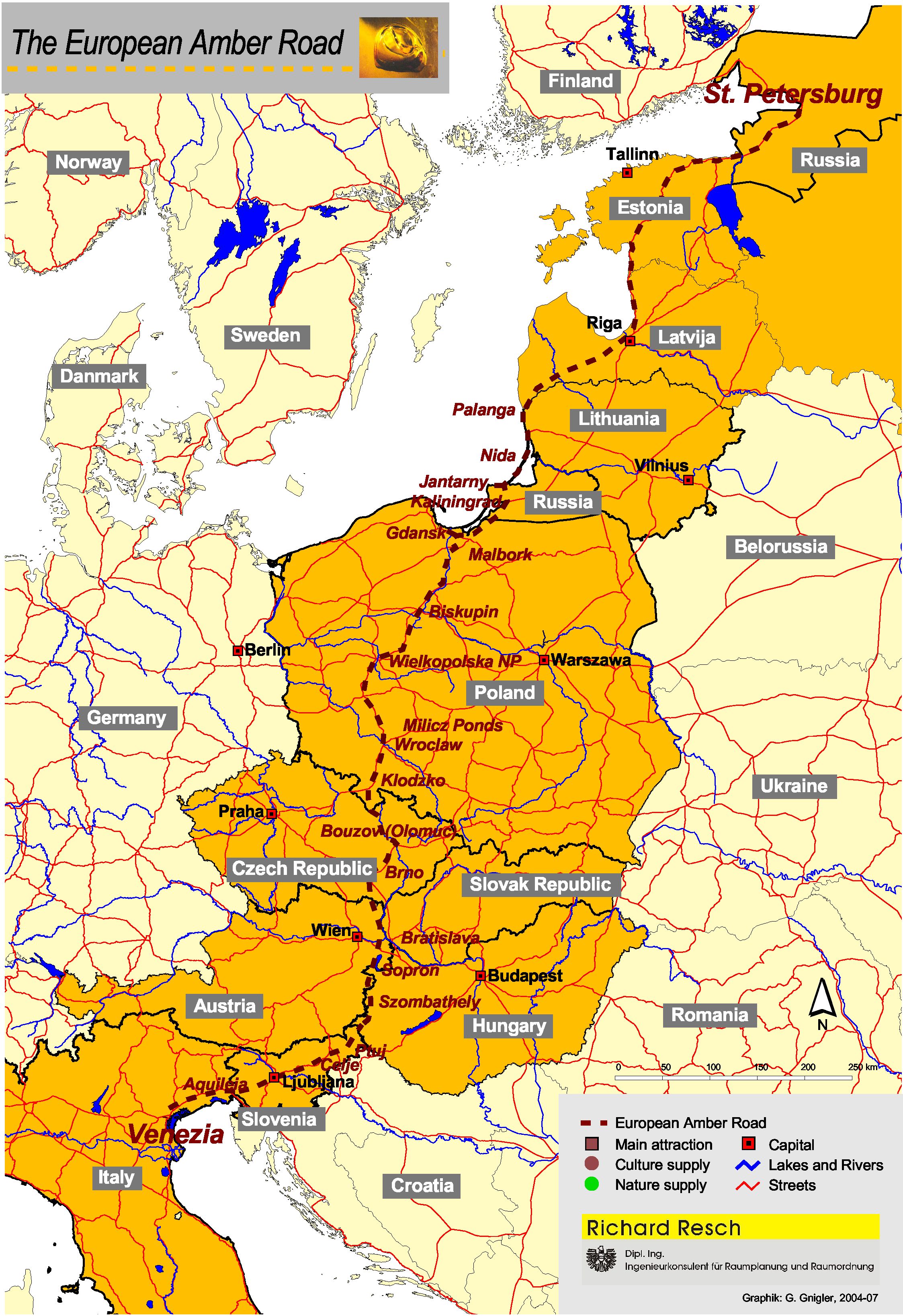|
Pomesanians
Pomesanians were a Prussian clan. They lived in Pomesania ( pl, Pomezania; lt, Pamedė; german: Pomesanien), a historical region in modern northern Poland, located between the Nogat and Vistula Rivers to the west and the Elbląg River to the east. It is located around the modern towns of Elbląg and Malbork. As the westernmost clan, the Pomesanians were the first of the Prussians to be conquered by the Teutonic Knights, a German military crusading order brought to the Chełmno Land to convert the pagans to Christianity. Due to Germanization and assimilation, Pomesanians became extinct some time in the 17th century. Etymology The territory is said in folk etymology to have been named after Pomeso, a son of Widewuto, legendary chieftain of the Prussians. Georg Gerullis determined that its name was actually derived from the Old Prussian word , meaning ''fringe of the forest''. The Lithuanian term ''pamedė'', having the same meaning, was introduced by Kazimieras Būga. His ... [...More Info...] [...Related Items...] OR: [Wikipedia] [Google] [Baidu] |
Prussian Crusade
The Prussian Crusade was a series of 13th-century campaigns of Roman Catholic crusaders, primarily led by the Teutonic Knights, to Christianize under duress the pagan Old Prussians. Invited after earlier unsuccessful expeditions against the Prussians by Christian Polish kings, the Teutonic Knights began campaigning against the Prussians, Lithuanians and Samogitians in 1230. By the end of the century, having quelled several Prussian uprisings, the Knights had established control over Prussia and administered the conquered Prussians through their monastic state, eventually erasing the Prussian language, culture and pre-Christian religion by a combination of physical and ideological force. Some Prussians took refuge in neighboring Lithuania. Early missions and conflicts Wulfstan of Hedeby, an agent of Alfred of Wessex, recorded the seafaring and cattle-herding Prussians as a strong and independent nation. Mieszko I of the Polans tried to extend his realm from land he had ... [...More Info...] [...Related Items...] OR: [Wikipedia] [Google] [Baidu] |
Old Prussians
Old Prussians, Baltic Prussians or simply Prussians ( Old Prussian: ''prūsai''; german: Pruzzen or ''Prußen''; la, Pruteni; lv, prūši; lt, prūsai; pl, Prusowie; csb, Prësowié) were an indigenous tribe among the Baltic peoples that inhabited the region of Prussia, at the south-eastern shore of the Baltic Sea between the Vistula Lagoon to the west and the Curonian Lagoon to the east. The Old Prussians, who spoke an Indo-European language now known as Old Prussian and worshipped pre-Christian deities, lent their name, despite very few commonalities, to the later, predominantly Low German-speaking inhabitants of the region. The duchy of the Polans under Mieszko I, which was the predecessor of the Kingdom of Poland, first attempted to conquer and baptize the Baltic tribes during the 10th century, but repeatedly encountered strong resistance. Not until the 13th century were the Old Prussians subjugated and their lands conquered by the Teutonic Order. The remaining Old ... [...More Info...] [...Related Items...] OR: [Wikipedia] [Google] [Baidu] |
Prussia (region)
Prussia (Old Prussian: ''Prūsa''; german: Preußen; lt, Prūsija; pl, Prusy; russian: Пруссия, tr=Prussiya, ''/Prussia/Borussia'') is a historical region in Europe on the south-eastern coast of the Baltic Sea, that ranges from the Vistula delta in the west to the end of the Curonian Spit in the east and extends inland as far as Masuria. Tacitus's '' Germania'' (98 AD) is the oldest known record of an eyewitness account on the territory and its inhabitants. Pliny the Elder had already confirmed that the Romans had navigated into the waters beyond the ''Cimbric peninsula'' (Jutland). Suiones, Sitones, Goths and other Germanic people had temporarily settled to the east and west of the Vistula River during the Migration Period, adjacent to the Aesti, who lived further to the east. Overview The region's inhabitants of the Middle Ages have first been called ''Bruzi'' in the brief text of the Bavarian Geographer and since been referred to as Old Prussians, who, beginnin ... [...More Info...] [...Related Items...] OR: [Wikipedia] [Google] [Baidu] |
Widewuto
Widewuto (also ''Viduutus'', ''Vidvutus'', ''Witowudi'', ''Waidewut'', ''Vaidevutis'') was a legendary king of the pagan Prussians who ruled along with his elder brother, the high priest (''Kriwe-Kriwajto'') Bruteno in the 6th century AD. They are known from writings of 16th-century chroniclers , Simon Grunau, and Lucas David. Though the legend lacks historical credibility, it became popular with medieval historians. It is unclear whether the legend was authentically Prussian (i.e. recorded from Prussian mythology) or was created by Grunau (possibly inspired by Biblical Moses and Aaron), though Lithuanian researchers tend to support its authenticity. Names Widewuto's name is found in literature in different forms: Veijdenutus, Vydevutis, Vidowuto, Viduutus, Waidewut, Wejdewut, Wenedut, Widewuto, Widewutte, Widiwutus, Wydowudo, Wydowudus, Widowuto, Wydowuto, Widowutus, Witoud, Witoudo, Witouito, Witowudus, Witowuto, Wotowudo, Vaidevutis (modern Lithuanian emendation). As for his b ... [...More Info...] [...Related Items...] OR: [Wikipedia] [Google] [Baidu] |
Archbishopric Of Riga
The Archbishopric of Riga ( la, Archiepiscopatus Rigensis, nds, Erzbisdom Riga) was an archbishopric in Medieval Livonia, a subject to the Holy See. It was established in 1186 as the bishopric of Livonia at Ikšķile, then after moving to Riga it became the bishopric of Riga in 1202 and was elevated to an archbishopric in 1255. Archbishops of Riga The archbishops of Riga were also the secular rulers of Riga until 1561 when during the Reformation the territory converted from Catholicism to Lutheranism and all church territories were secularized. The see was restored as a diocese of the Catholic Church in 1918 and raised into an archdiocese in 1923. Bishops and Archbishops of Riga A new Bishopric of Livonia was established in Latgalia in 1621 during the Inflanty Voivodeship of the Polish–Lithuanian Commonwealth. Coinage The Archbishops of Riga were innovators in the field of minting currency, reviving techniques abandoned since the collapse of Rome. The names o ... [...More Info...] [...Related Items...] OR: [Wikipedia] [Google] [Baidu] |
Bishopric Of Pomesania
The Bishopric of Pomesania (german: Bistum Pomesanien; pl, Diecezja pomezańska) was a Catholic diocese in the Prussian regions of Pomesania and Pogesania, in modern northern Poland until the 16th century, then shortly a Lutheran diocese, and became a Latin titular see. The former Cathedral and Castle of Pomesanian Cathedral Chapter complex in Kwidzyn is listed as a Historic Monument of Poland. Catholic diocese It was founded as one of four Roman Catholic dioceses in Prussia in 1243 by the papal legate William of Modena. The bishops, whose seat was Riesenburg (Prabuty), ruled one third of diocesan territory as his temporality. The diocesan cathedral chapter met in the fortified cathedral of Marienwerder (Kwidzyn). In the 1280s the Teutonic Order succeeded to impose the simultaneous membership of all capitular canons in the Order thus winning influence in the diocese and in the capitular elections of the bishops. So the temporality of Pomesania's bishop did not devel ... [...More Info...] [...Related Items...] OR: [Wikipedia] [Google] [Baidu] |
Truso
Truso was a Viking Age port of trade (emporium) set up by the Scandinavians at the banks of the Nogat delta branch of the Vistula River, close to a bay (the modern Drużno lake), where it emptied into the shallow and brackish Vistula Lagoon. This sizeable lagoon is separated from the Gdańsk Bay by the Vistula Spit at the southern Baltic Sea coast. In the 9th century, the merchant Wulfstan of Hedeby travelled to Truso in the service of the English King Alfred the Great and wrote his account of the place at a prominent location of the Amber Road, which attracted merchants from central and southern Europe, who supplied the markets in the Mediterranean and the Middle East with the highly valued commodity. The account of the voyage to the town of Truso in the land of the ''Pruzzens'' around the year 890 by Wulfstan of Hedeby has been included in Alfred the Great's translation of Orosius' ''Histories''. Moreover, Wulfstan named Truso as being near ''Estmere'' (which is his rendition of ... [...More Info...] [...Related Items...] OR: [Wikipedia] [Google] [Baidu] |
Monastic State Of The Teutonic Knights
The State of the Teutonic Order (german: Staat des Deutschen Ordens, ; la, Civitas Ordinis Theutonici; lt, Vokiečių ordino valstybė; pl, Państwo zakonu krzyżackiego), also called () or (), was a medieval Crusader state, located in Central Europe along the southeastern shore of the Baltic Sea. It was formed by the knights of the Teutonic Order during the 13th century Northern Crusades in the region of Prussia. The Livonian Brothers of the Sword merged in 1237 with the Teutonic Order of Prussia and became known as its branch, the Livonian Order, while their state ('' Terra Mariana'') became a part of the Teutonic Order State. At its greatest territorial extent, in the early 15th century, it encompassed Chełmno Land, Courland, Gotland, Livonia, Neumark, Pomerelia ( Gdańsk Pomerania), Prussia and Samogitia, i.e. territories nowadays located in Estonia, Latvia, Lithuania, Germany, Poland, Russia, and Sweden. Following the battles of Grunwald in 1410 and W ... [...More Info...] [...Related Items...] OR: [Wikipedia] [Google] [Baidu] |
Marienwerder
Kwidzyn (pronounced ; german: Marienwerder; Latin: ''Quedin''; Old Prussian: ''Kwēdina'') is a town in northern Poland on the Liwa River, with 38,553 inhabitants (2018). It is the capital of Kwidzyn County in the Pomeranian Voivodeship. Geography Kwidzyn is located on the Liwa River, some east of the Vistula river, approximately south of Gdańsk and southwest of Kaliningrad. It is part of the region of Powiśle. History The Pomesanian settlement called ''Kwedis'' existed in the 11th century. In 1232, the Teutonic Knights built the castle and established the town of Marienwerder (now Kwidzyn) the following year. In 1243, the Bishopric of Pomesania received both the town and castle from the Teutonic Order as fiefs, and the settlement became the seat of the Bishops of Pomesania within Prussia. The town was populated by artisans and traders, originating from towns in the northern parts of the Holy Roman Empire. A Teutonic knight, Werner von Orseln, was murdered in Marie ... [...More Info...] [...Related Items...] OR: [Wikipedia] [Google] [Baidu] |
Toruń
)'' , image_skyline = , image_caption = , image_flag = POL Toruń flag.svg , image_shield = POL Toruń COA.svg , nickname = City of Angels, Gingerbread city, Copernicus Town , pushpin_map = Kuyavian-Pomeranian Voivodeship#Poland#Europe , pushpin_relief=1 , pushpin_label_position = top , subdivision_type = Country , subdivision_name = , subdivision_type1 = Voivodeship , subdivision_name1 = , leader_title = City mayor , leader_name = Michał Zaleski , established_title = Established , established_date = 8th century , established_title3 = City rights , established_date3 = 1233 , area_total_km2 = 115.75 , population_as_of = 31 December 2021 , population_total = 196,935 ( 16th) Data for territorial unit 0463000. , population_density_km2 = 1716 , population_metro = 297646 , timezone = CET , utc_offset = +1 , timezone_DST = CEST , utc_offset_DST = +2 , coordinates = , elevatio ... [...More Info...] [...Related Items...] OR: [Wikipedia] [Google] [Baidu] |
Konrad I Of Masovia
Konrad I of Masovia (ca. 1187/88 – 31 August 1247), from the Polish Piast dynasty, was the sixth Duke of Masovia and Kuyavia from 1194 until his death as well as High Duke of Poland from 1229 to 1232 and again from 1241 to 1243. Life Konrad was the youngest son of High Duke Casimir II the Just of Poland and Helen of Znojmo, daughter of the Přemyslid duke Conrad II of Znojmo (ruler of the Znojmo Appanage in southern Moravia, part of Duchy of Bohemia). His maternal grandmother was Maria of Serbia, apparently a daughter of the pre- Nemanjić ''župan'' Uroš I of Rascia. After his father's death in 1194, Konrad was brought up by his mother, who acted as regent of Masovia. In 1199, he received Masovia and in 1205 the adjacent lands of Kuyavia as well. In 1205, he and his brother, Duke Leszek I the White of Sandomierz, had their greatest military victory at Battle of Zawichost against Prince Roman the Great of Galicia–Volhynia. The Ruthenian army was crushed and Roman was ... [...More Info...] [...Related Items...] OR: [Wikipedia] [Google] [Baidu] |
_statute_book_of_1340%2C_a_copy_from_the_16th_century.jpg)




